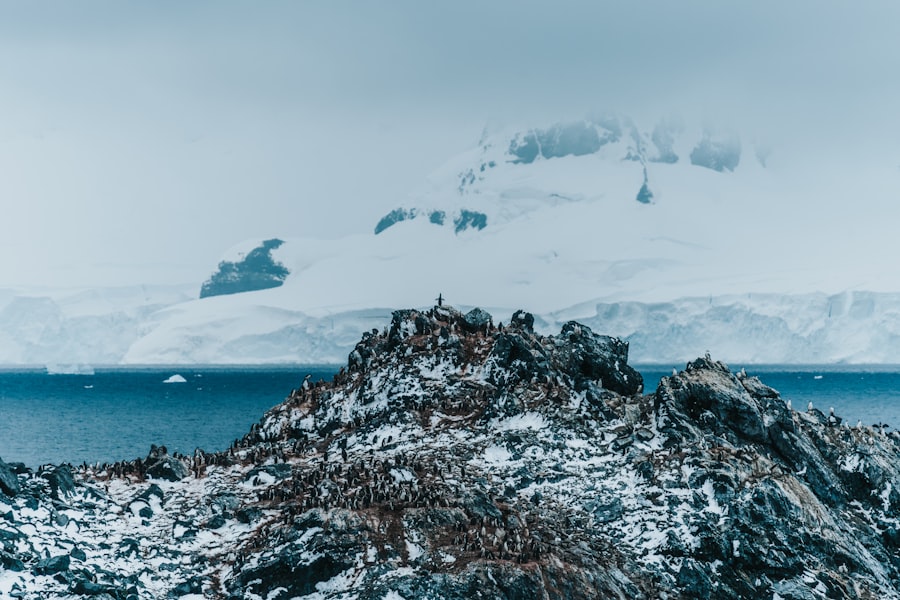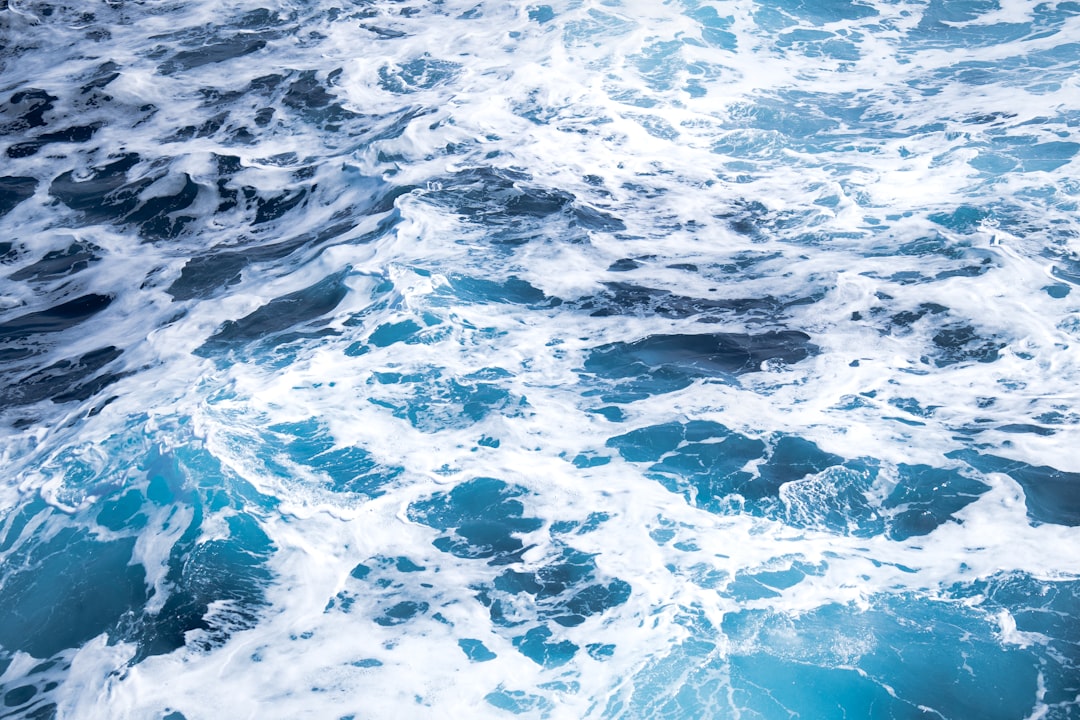The Drake Passage, a body of water situated between the southern tip of South America and Antarctica, is renowned for its tumultuous seas and significant role in global oceanic currents. This narrow stretch of ocean, measuring approximately 800 kilometers (500 miles) wide, serves as a critical conduit for maritime traffic between the Atlantic and Pacific Oceans. Named after the English explorer Sir Francis Drake, who navigated these waters in the late 16th century, the passage has become a focal point for adventurers, researchers, and nature enthusiasts alike.
Its unique geographical position not only makes it a vital route for shipping but also a gateway to the pristine wilderness of Antarctica. The Drake Passage is often characterized by its unpredictable weather and challenging sea conditions, which can transform from calm to tempestuous within a matter of hours. This unpredictability has earned it a reputation as one of the most treacherous maritime routes in the world.
Despite these challenges, the passage attracts numerous vessels each year, ranging from research ships to luxury cruise liners, all eager to explore the breathtaking landscapes and rich biodiversity that lie beyond its turbulent waters.
Key Takeaways
- The Drake Passage is a body of water between South America’s Cape Horn and the South Shetland Islands of Antarctica, known for its challenging sailing conditions.
- The Drake Passage has a rich historical significance as the route taken by famous explorers such as Sir Francis Drake and Charles Darwin on their voyages.
- The geographical features of the Drake Passage, including its narrow width and strong winds, make it one of the most challenging waterways to navigate.
- The weather patterns in the Drake Passage are characterized by strong winds, rough seas, and rapidly changing conditions, making it important for travelers to be prepared for unpredictable weather.
- The Drake Passage is home to a diverse range of wildlife and marine life, including penguins, seals, and whales, making it a popular destination for wildlife enthusiasts and researchers.
Historical significance of the Drake Passage
Historically, the Drake Passage has played a pivotal role in maritime exploration and trade. In the 16th century, Sir Francis Drake became one of the first Europeans to navigate these waters, marking a significant moment in the Age of Exploration. His journey not only demonstrated the feasibility of crossing from the Atlantic to the Pacific but also opened up new trade routes that would later be exploited by European powers.
The passage became a crucial link for explorers seeking to chart unknown territories and expand their empires, leading to an era of increased maritime activity in the region. The passage’s historical significance extends beyond exploration; it has also been a site of conflict and competition among nations. The quest for control over these waters has led to various geopolitical tensions, particularly during the 19th and 20th centuries when whaling and fishing industries flourished.
The rich marine resources found in the Drake Passage attracted numerous countries, resulting in disputes over fishing rights and territorial claims. Today, international agreements aim to protect this vital ecosystem while balancing the interests of various nations.
Geographical features and challenges of the Drake Passage

The geographical features of the Drake Passage are as diverse as they are striking. The passage is flanked by the rugged coastlines of Cape Horn to the north and the Antarctic Peninsula to the south. This unique positioning creates a funneling effect that intensifies ocean currents, particularly the Antarctic Circumpolar Current, which flows unimpeded around Antarctica.
This current is responsible for some of the most powerful waves on Earth, making navigation through the passage a formidable challenge for even the most experienced mariners. In addition to its fierce currents, the Drake Passage is characterized by its deep waters and numerous underwater features, including submerged ridges and seamounts. These geological formations can create sudden changes in water depth, leading to unpredictable wave patterns that pose risks to vessels traversing the area.
The combination of strong winds, high waves, and shifting currents makes the Drake Passage a formidable barrier for ships, requiring careful planning and skilled navigation to ensure safe passage.
Weather patterns and climate in the Drake Passage
| Month | Average Temperature (°C) | Precipitation (mm) | Wind Speed (km/h) |
|---|---|---|---|
| January | 5 | 80 | 35 |
| February | 5 | 90 | 40 |
| March | 4 | 100 | 45 |
| April | 2 | 110 | 50 |
| May | 0 | 120 | 55 |
| June | -2 | 130 | 60 |
The weather patterns in the Drake Passage are notoriously volatile, influenced by a confluence of climatic factors from both hemispheres. The region experiences frequent storms and high winds, particularly during the winter months when low-pressure systems dominate. These storms can produce waves that reach heights of up to 15 meters (50 feet), creating hazardous conditions for vessels attempting to cross.
Mariners must remain vigilant and prepared for rapid changes in weather, as conditions can shift dramatically within hours.
The average sea temperature hovers around 5 degrees Celsius (41 degrees Fahrenheit), while air temperatures can dip significantly lower during winter months.
Despite these harsh conditions, summer months bring a brief respite with milder weather and longer daylight hours, making it a more favorable time for exploration and travel through the passage. Understanding these weather patterns is crucial for anyone planning a journey through this challenging maritime region.
Wildlife and marine life in the Drake Passage
The Drake Passage is not only known for its treacherous waters but also for its rich biodiversity. The nutrient-rich waters support a diverse array of marine life, making it a prime feeding ground for various species. Among the most notable inhabitants are several species of whales, including humpback whales, orcas, and blue whales, which migrate through these waters in search of food during certain times of the year.
The sight of these majestic creatures breaching the surface is a highlight for many travelers crossing the passage. In addition to whales, the passage is home to an impressive variety of seabirds, including albatrosses and petrels that glide effortlessly over the waves. These birds are often seen following ships, taking advantage of the updrafts created by vessels moving through the water.
The rich marine ecosystem also supports thriving populations of seals and penguins on nearby islands, further enhancing the region’s appeal as a destination for wildlife enthusiasts. The opportunity to observe such diverse wildlife in their natural habitat adds an enriching dimension to any journey through the Drake Passage.
Navigational strategies for crossing the Drake Passage

Successfully navigating the Drake Passage requires careful planning and strategic decision-making. Mariners must be well-versed in chart reading and familiar with local navigational aids to ensure safe passage through this challenging waterway. One effective strategy involves monitoring weather forecasts closely before embarking on a journey.
By choosing optimal departure times based on predicted weather conditions, vessels can minimize their exposure to severe storms and rough seas. Another crucial aspect of navigation in the Drake Passage is understanding ocean currents and their impact on vessel speed and direction. Experienced captains often utilize current charts to plot courses that take advantage of favorable currents while avoiding areas where opposing currents may create dangerous conditions.
Additionally, maintaining open communication with other vessels in the area can provide valuable insights into real-time conditions and potential hazards.
Safety precautions and emergency protocols in the Drake Passage
Given its reputation for unpredictable weather and challenging navigation, safety precautions are paramount when crossing the Drake Passage. Vessels must be equipped with essential safety gear, including life rafts, emergency beacons, and first aid kits. Crew members should undergo regular safety drills to ensure they are prepared for emergencies such as man overboard situations or equipment failures.
In addition to onboard safety measures, having a well-defined emergency protocol is critical for ensuring crew safety during unexpected events. This includes establishing clear communication channels among crew members and with other vessels in the vicinity. In case of severe weather or mechanical failure, vessels should have contingency plans in place for seeking shelter or returning to port if necessary.
By prioritizing safety and preparedness, mariners can navigate the Drake Passage with greater confidence.
Popular routes and destinations in the Drake Passage
The Drake Passage serves as a gateway to some of the most breathtaking destinations on Earth, particularly those located in Antarctica. One popular route involves departing from Ushuaia, Argentina, often referred to as the southernmost city in the world. From there, vessels typically head southwest across the passage toward various Antarctic destinations such as Deception Island or Paradise Bay.
These locations offer stunning landscapes characterized by towering glaciers, dramatic ice formations, and unique wildlife encounters. Another popular destination within reach of the Drake Passage is King George Island, which serves as a hub for scientific research and tourism alike. Visitors can explore research stations operated by various countries while enjoying opportunities for wildlife observation and photography.
The combination of stunning natural beauty and rich scientific history makes these destinations highly sought after by travelers eager to experience the wonders of Antarctica.
Research and scientific exploration in the Drake Passage
The Drake Passage is not only a vital route for maritime traffic but also an important site for scientific research and exploration. Researchers from around the world flock to this region to study its unique marine ecosystems and monitor environmental changes resulting from climate change. The nutrient-rich waters support diverse marine life that serves as an indicator of broader ecological health, making it an ideal location for long-term studies.
In addition to biological research, scientists also investigate oceanographic phenomena within the passage itself. Studies on ocean currents, temperature variations, and salinity levels contribute valuable data that enhances understanding of global climate patterns. Collaborative research efforts often involve partnerships between universities, governmental agencies, and non-profit organizations dedicated to preserving this fragile environment while advancing scientific knowledge.
Cultural and educational experiences in the Drake Passage
Traveling through the Drake Passage offers not only breathtaking natural beauty but also rich cultural experiences that enhance visitors’ understanding of this remote region. Many expedition cruises include educational programs led by knowledgeable guides who share insights into local history, wildlife conservation efforts, and indigenous cultures that have inhabited nearby areas for centuries. Visitors may also have opportunities to engage with scientists conducting research in Antarctica or participate in citizen science projects aimed at monitoring environmental changes.
These experiences foster a deeper appreciation for both the natural world and human efforts to protect it while providing travelers with unique perspectives on life in one of Earth’s most remote regions.
Tips for planning a successful journey through the Drake Passage
Planning a successful journey through the Drake Passage requires careful consideration of several factors. First and foremost is selecting an appropriate time of year for travel; summer months from November to March offer milder weather conditions conducive to exploration. Travelers should also research various cruise operators or charter services that specialize in Antarctic voyages to find one that aligns with their interests and budget.
Additionally, packing appropriately is essential for comfort during transit across potentially rough seas. Layered clothing designed for cold weather is recommended along with sturdy footwear suitable for wet conditions on deck or during land excursions. Finally, travelers should remain flexible with their itineraries; unexpected weather changes may necessitate adjustments to planned routes or activities but can also lead to serendipitous discoveries along this remarkable journey through one of nature’s most awe-inspiring passages.
The Drake Passage, a significant body of water located between the southern tip of South America and Antarctica, is renowned for its depth and challenging navigation conditions. This passage plays a crucial role in global ocean circulation and climate regulation. For those interested in exploring more about the geographical and oceanographic significance of such regions, a related article can be found on MyGeoQuest. This article delves into various geographical wonders and their impact on our planet. To learn more, you can visit the article by clicking on this link.
WATCH NOW! Drake Passage: Earth’s Deadliest Waters Revealed
FAQs
What is the Drake Passage?
The Drake Passage is a body of water located between the southern tip of South America (Cape Horn) and the South Shetland Islands of Antarctica. It connects the southwestern part of the Atlantic Ocean with the southeastern part of the Pacific Ocean.
How deep is the Drake Passage?
The average depth of the Drake Passage is approximately 11,000 feet (3,400 meters). However, there are areas within the passage that can reach depths of over 13,000 feet (4,000 meters).
Why is the Drake Passage significant?
The Drake Passage is known for its rough seas and strong winds, making it one of the most challenging and unpredictable bodies of water to navigate. It is also significant because it is the narrowest stretch of ocean between Antarctica and any other landmass, which allows for the strong Antarctic Circumpolar Current to flow through, influencing global ocean circulation.
What wildlife can be found in the Drake Passage?
The Drake Passage is home to a diverse range of marine wildlife, including various species of whales, seals, and seabirds. It is also known for its rich and unique ecosystem, with many species that are found nowhere else in the world.
Are there any scientific research activities in the Drake Passage?
Yes, the Drake Passage is a popular area for scientific research due to its unique oceanographic and atmospheric conditions. Researchers study the passage to better understand global climate patterns, ocean circulation, and the impact of the Antarctic Circumpolar Current on marine life.
